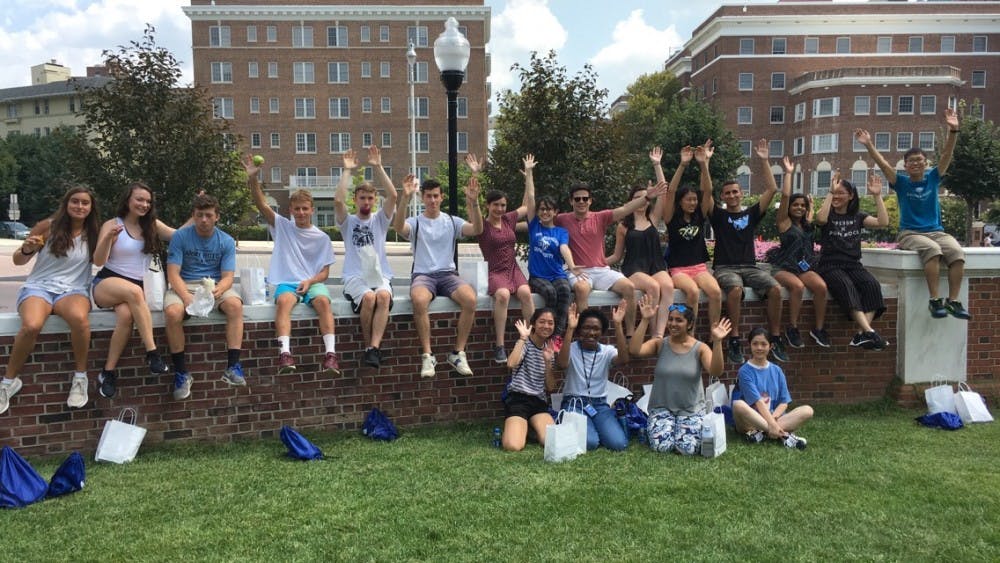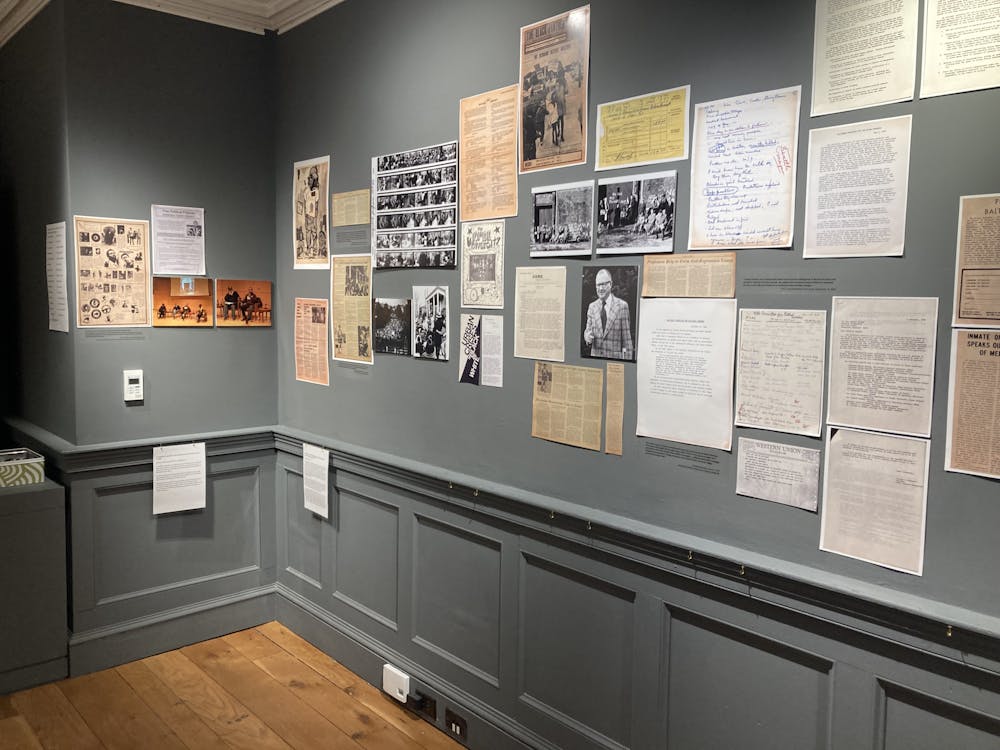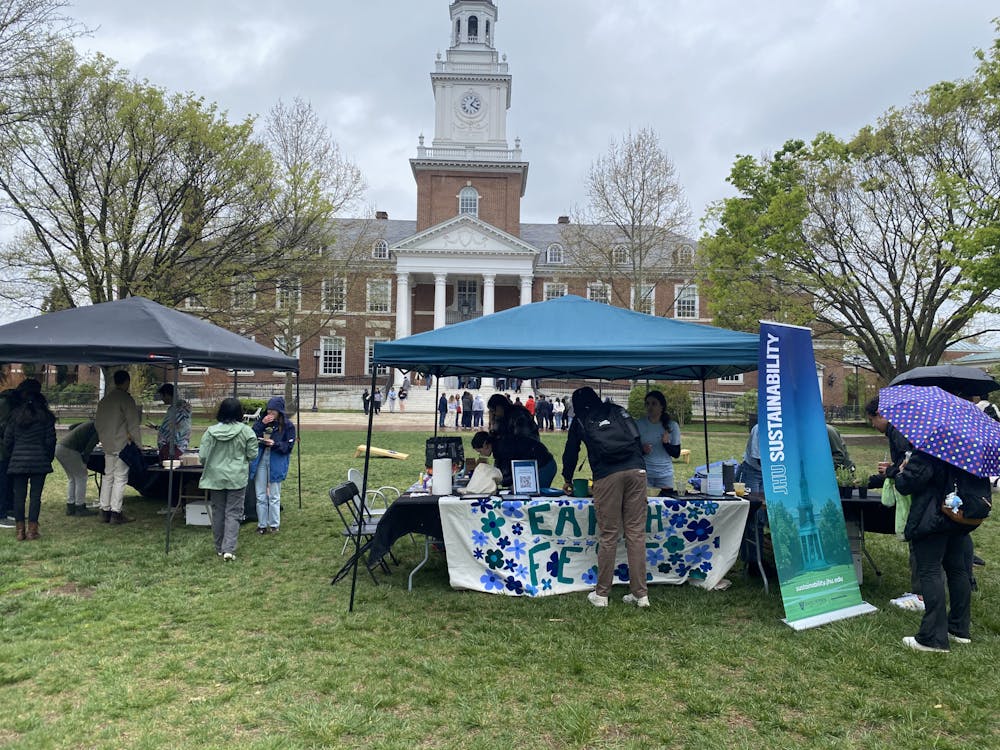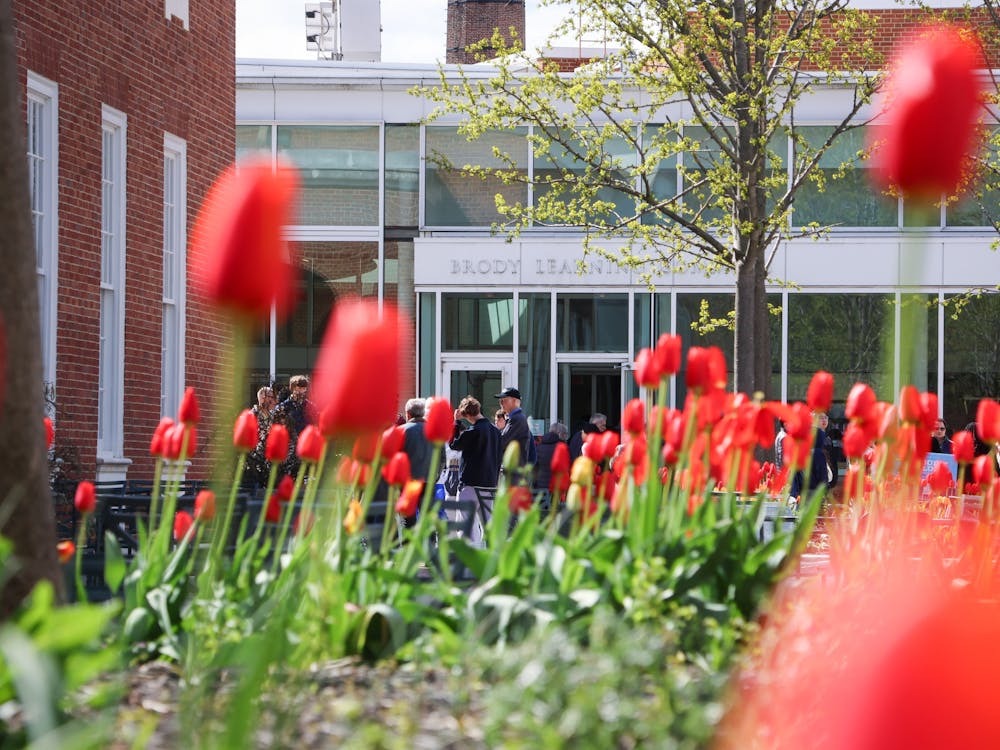Over 1,300 new students arrived on campus last week to participate in the University’s annual Orientation Week for first years. “O-Week” aims to help incoming first years adjust to life at Hopkins.
During past Orientation Weeks, first-year students were organized at random into peer-mentor led First-Year Mentor (FYM) groups of 20-25 students each. This year, however, FYM groups were assigned by residence hall floors or houses.
Freshman Jeremy Hoffner believes that being in an FYM group with people who lived in close proximity helped him become closer to his neighbors.
“I’m glad that they did it by areas in the dorms, so we can just come and knock on each other’s doors if we want to,” he said. “It’s much more like a community now.”
In an email to The News-Letter, First-Year Experience Coordinator Brittany Claridge wrote that unlike previous years, this year’s O-week was organized thematically. According to Claridge, assigning different events to each day was meant to create a more thematic and intentional introduction for the freshmen. The different days were: Welcome; Community Expectations; Academics; In and Of the City; and Johns Hopkins.
“While many of the major program elements remained the same, we thought more critically about what sequence each happened in so that the program and dialogue surrounding programs was more cohesive,” she wrote.
Alongside Claridge, a group of three graduate interns and a Core Team of five undergraduate students help organize Orientation. Core Team member Anna Frazier said that the Core Team also restructured discussions around more serious topics, such as sexual violence and alcohol safety.
She added that programming this year allowed students to take more breaks during the day, especially after such programs. Events started no earlier than 9 a.m. and went until no later than 8:30 p.m.
Frazier noted that both first-year students and FYMs seemed to like the new structure. FYMs serve as leaders for first-year students, lead group activities during Orientation and inform students about the resources on campus.
“We made sure that students and FYMs would be supported throughout the heavier programming, which could be triggering,” she said.
Because students were required to go over sensitive topics, student organizers provided extra services to make sure students werent overwhelmed.
“We made sure that there wasn’t too much heavy content right after one another. They had free time afterwards and counselors on-site to provide guidance or support to the students if needed.”
Claridge explained that instead of the previous years’ large group lectures, this time students had smaller discussions with their RAs and FYMs.
FYMs and RAs worked together to deliver scripts about alcohol awareness and safety to the first year students in a more interactive format.
“While not always possible due to the content or number of qualified facilitators, we know that learning in small groups is ideal and this change in our alcohol education allowed us to change up the pace of our sessions,” she wrote.
Junior Sarah Abella was an FYM last year and returned to her position again this year. She emphasized the sense of fellowship and community that the O-week structure provides to the incoming students.
“A big part of having an FYM is having a friendly face on campus, having someone to go to,” she said. “If [they’re] ever in a bind, I hope my mentees would reach out to me. I don’t disappear just because O-week is over. I’ll be around, and the FYMs as a community are always excited to help whoever we see.”
Freshman Timothy Carlson said that his FYM shared valuable guidance about what being a Hopkins student would be like.
“My FYM was really helpful because she was also [studying Biomedical Engineering] and she had struggled a lot with BME, so she was able to talk to us about how to not struggle like she did,” he said.
Carlson said that his FYM gave him some helpful tips about getting used to Hopkins academics.
“She took on too much and didn’t realize the importance of being at class as often as possible,” he said.
O-week also involved students in discussions about different aspects of college life, including talks such as Retaking Our Story (Sexual Assault Prevention), Blue Jays and the Blue Zone (Alcohol Education Workshop) and One Better World (Diversity and Inclusion).
Abella felt that the messages about sexual assault prevention, diversity, inclusion and alcohol safety would resonate more with the first-year students if they heard it from their peers (FYMs and RAs) as opposed to a non-interactive lecturer.
According to Carlson, the open nature of this programming could potentially come as a unique experience for some students with more conservative education backgrounds.
He also believes that this could offer them a unique opportunity to discuss these topics in an academic setting.
“I went to Catholic school, so the extent of my [sexual education] was ‘don’t have sex,’ so, it’s new to be exposed to it publicly, instead of just privately with your friends,” he said.
The mentors also led more personal discussions to foster a sense of empathy and understanding among the new students.
While it can initially be a struggle to encourage the mentees to be open about their feelings and expectations, Abella explained various tactics she used to help create a more open discourse in her group of mentees.
“I have everyone write an activity on a notecard that they’re scared about at Hopkins, and we throw all our index cards in the middle, and we get to share other people’s fears and anxieties,” she said. “It’s like an anonymous way to say, ‘I’m scared about this,’ so we can talk about the fear, validate the fear and realize that it’s manageable and that everyone’s feeling it.”
Abella encourages students to become involved as FYMs to help ensure that freshmen have a positive O-week experience.
Sophomore Julie Awad said that she became an FYM this year because she wanted to help students adjust to moving to Hopkins.
“I know that personally my orientation experience wasn’t that amazing, so I wanted to give these students a good first impression of Hopkins,” she said.
Awad stated that although the training was long and extensive, she felt that the experience of being a peer mentor was worth it. She said that she became close with her mentees and fostered a good environment. She stated that even though many of the O-week events were not mandatory, her mentees showed up for almost all of them.
Although freshman Nicole Gander initially had worries about the process of adjusting to Hopkins the role of her mentor group in easing that process.
“At first coming on to campus was a little intimidating, just not knowing anyone,” she said.
However, Gander soon realized that she shared a lot in common with her fellow students.
“I think once we got settled into our orientation groups, you just realize how everyone is in the same boat, but also how kind everyone just because we all understand how nerve-wracking it is getting settled in,” she said.
Likewise, freshman Mya Thomas thought her FYM was helpful during orientation. Despite enjoying her experience during orientation week, she was still felt nervous about her first few days of school.
“They gave us a lot of good tips for starting college,” she said.
Thomas offered some suggestions on how to improve the first-year experience.
“One thing I would’ve like to have seen though would be a campus tour, because I know I’m going to have trouble finding everything tomorrow,” she said.
Transfer students who were not entering the school year as registered freshmen but were still first-year Hopkins students participated in O-week activities and were assigned a FYM.
“Transfer students certainly enter Hopkins with a unique set of challenges and transitions that is very different from their first-year peers,” Claridge wrote. “One of the greatest challenges in supporting this population of students both for staff and for their mentors is that each student’s experience and needs is truly unique. This means that we must create a transfer year experience that can be both comprehensive but also flexible at the same time.”
Claridge noted that some transfer students live off-campus, so they arrive to campus several days before the incoming freshmen arrive.
She said that this allows transfer students a chance to adjust to their living conditions before the orientation week activities begin.
An additional activity conducted on Baltimore Day was the group conversation about the Common Read book, which all incoming first-years were instructed to read over the summer.
According to its website, the Common Read program aims to encourage students to relate to each other over a shared reading experience, while also providing an opportunity for students to submit response essays in an annual competition.
Awad expressed that she was initially worried that her group would not have enough to talk about to fill the time alloted for the common read discussion.
However, she said that her group was enthusiastic about the common read.
“We talked for an hour, and we could have talked for more,” she said.
Although not all students actually read the book over the summer, Awad said that in this context, it did not make a big impact on their discussions because the book touched on so many relevant issues.
“Some of the students didn’t read the book, but I feel like when it’s a topic like race, although it is important to read the book, it’s something that everyone has experienced — whether it’s discrimination against you or a friend,” she said.
Claridge explained that the Common Read Committee selected this memoir for the incoming freshmen class to read because the narrative reflects a holistic interpretation of the civil rights movement.
The Committee also felt that the book’s short 180-page length and first person narrative made it easily accessible for a wide audience.
“This book... explores how individual actions connect to larger social movements,” she wrote.
Claridge expressed that she thought that these ideals would be relevant to the incoming student body.
“The book also discusses themes of resistance and how to organize movements for social change, a topic the committee feels will resonate with students in the current national and political climate.”
Diva Parekh and Katy Wilner contributed reporting.
















Please note All comments are eligible for publication in The News-Letter.